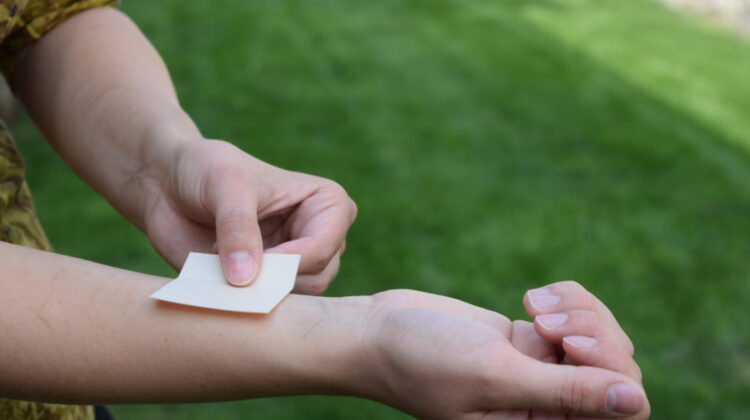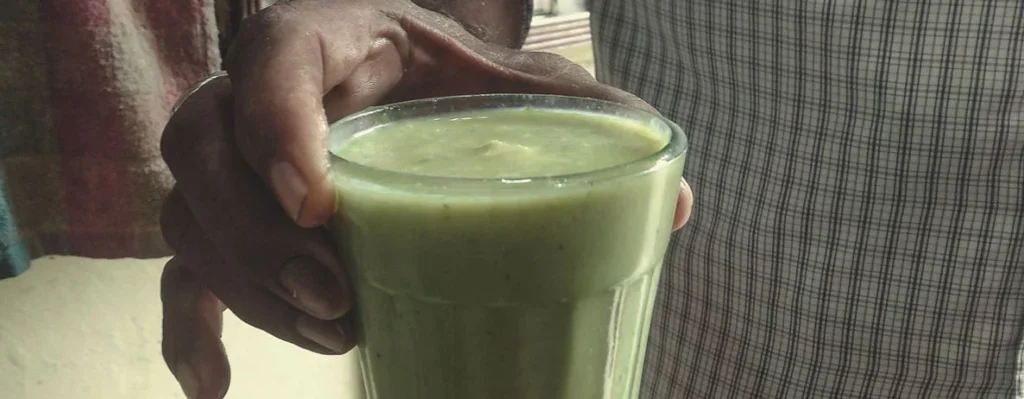
Photo Credit: Arbor Wellness
Anyone who considers themselves a frequent user of cannabis knows the basics by now: bowls, bongs, blunts, edibles, and joints. These are some of the most common forms of cannabis consumption. But what if we like to shake it up every once in a while?
This list features some of the more fascinating methods of cannabis consumption. Some have been around for millennia while others have only recently begun to gain steam.
Without further ado, here are four fascinating ways to consume cannabis.
Bhang

Bhang, a traditional Indian cannabis-infused beverage, is an important player in national celebrations. Photo credit: Royal Queen Seeds.
Our journey begins in the distant past. According to the DEA Museum, the first documented use of cannabis came from Emperor Shen Nung of China just before 2700 BC. The plant eventually made its way across Asia through avenues like the silk road.
In South Asia, it became popularized in bhang, a cannabis-infused drink that combines ingredients like milk, spices, and sweeteners with blended leaves and flowers. The concoction was often used in Ancient India for its therapeutic effect, even appearing in key Hindu readings.
Atharva Veda, one of the four sacred texts of Hinduism, names cannabis as one of the five most sacred plants on Earth. It’s referred to as both a liberator and a source of happiness. Shiva, the Hindu God of Destruction, was given the title “The Lord of Bhang” for his use of the plant to focus inward and harness his divine powers for the good of the world. Ancient Hindus believed that the use of the substance pleased the Gods, and saw it as a cure for ailments like fever because of that.
Today bhang is still popular in India and used for its psychotropic effects. It comes in flavors like apple, mango, and papaya. The beverage also plays an important role in national celebrations like Holi, the “Festival of Colors” and of course, Shivarti: “The Night of Shiva.”
Charas

Sticking with traditional Indian customs, charas is another popular form of consumption with deep historical roots. Often confused with ordinary hash, this handmade concentrate is made from a live cannabis plant, unlike its more widely known counterpart.
Popular in Pakistan, Afghanistan, and Nepal, charas is best known for its use in India. This ancient delicacy is smoked out of a small, narrow pipe called a chillum. While it packs a much bigger punch than bhang, charas is also used in many areas of the Hindu religion. Leafly says that modern practices include the smoking of charas while chanting the different names of Shiva.
The process of making charas is an intimate one that takes a lot of patience. It requires the maker to rub cannabis buds between their palms until it stops producing oil, leaving the hands sticky with black resin. As they continue to rub their hands over a plastic container, the resin will start to stick together and fall in. From here, they use their hands to work the resin into a little ball.
The Narcotic Drugs and Psychotropic Substances Act made charas illegal in India in 1985. Despite this, many in the country continue to produce and enjoy this age-old concentrate.
Sublingual Strips

Moving on to more modern methods, the use of sublingual strips has been trending upward in recent years. These cannabis-infused squares of film are similar to tinctures and are ingested orally. Its odorless and easy-to-transport nature makes it especially attractive for those trying to be discreet about their cannabis use.
The strip is made to be dissolved on the tongue, which takes about a minute. From there the cannabis enters the bloodstream. According to Leafwell, the drug’s direct entry makes for a quick onset time that allows the user to feel its effects much sooner than they would from the average gummy. The high itself has a similar duration as that of a traditional smoke session rather than the extended experience generated by edibles.
In addition to their fast-acting effects, the strips’ ability to go straight into the bloodstream lets it bypass the lungs and stomach, making for what many believe is a healthier alternative to more mainstream approaches. Another massive benefit to sublingual strips is precision, allowing for more exact dosages than other consumption methods.
Transdermal Patches

When people think of patches, they’re probably thinking about the type used by those trying to quit smoking. These are quite the opposite. This thin piece of plastic coated in adhesive is meant to be placed on a veinous area of the body for a long-lasting effect.
Much like the sublingual strips, these transdermal patches enter directly through the bloodstream. This efficient and stealthy practice is often applied by those hoping to keep their use on the down low.
Its extended release and slow cannabinoid absorption doesn’t create much of a head high, if any. That said, there are several applications for the transdermal patch. For example, it’s often used by those struggling with relaxation, sleep, and anxiety.
We also see high use among those dealing with medical issues. According to the National Library of Medicine, the ability to eliminate psychotropic effects of the drug makes it suitable for pain relief. A Healthline article from 2022 revealed that more people are starting to use CBD patches, which can help ease the pain of whatever area of the body it’s placed on.
It’s hard to discount the importance of cannabis legalization. The plant’s newfound freedom has only allowed for further testing in clinical settings. In other words, it seems we’ve only scratched the surface of the different ways to consume.
What comes next? Only time will tell.


Leave a Reply